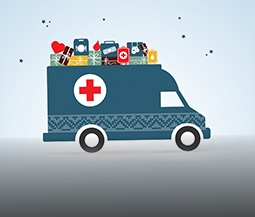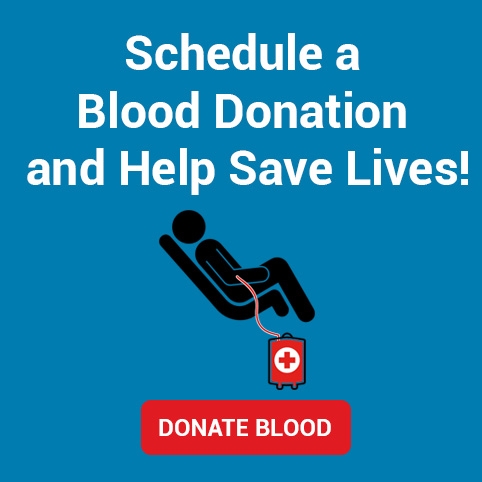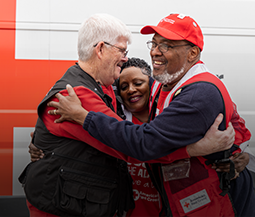Our thoughts are with Damar Hamlin, his family and the entire NFL community, and we are hopeful he has a fast and full recovery.
Since this terrible event, the American Red Cross has seen growing interest in the importance of being trained to perform Cardiopulmonary Resuscitation (CPR) and on how to use an AED and recommends that everyone take this lifesaving training.
Accidents and emergencies can happen anytime at home, in the workplace or in the community. Every second counts when sudden cardiac arrest occurs, and it’s crucial to know what to do in an emergency. Rapid treatment can increase someone’s chance of survival — this training can give people the knowledge and confidence to respond during an emergency situation with skills that can help save a life.
SIGNS OF CARDIAC ARREST include the person being unresponsive, even if you shake or shout at them, or if the person isn’t breathing or is only gasping. If you see someone collapse without warning, know your ‘Cardiac Arrest 1-2-3.’
Call 911.
Start CPR.
Use an AED.
CPR AND AED CPR should be used when someone stops breathing and their heart isn’t beating. CPR keeps oxygenated blood flowing to the brain and heart when the heart stops. While CPR is essential to maintain blood flow through the heart, an AED defibrillator will get the heart started again when it stops which is imperative for maintaining a natural heart rhythm that can help prevent not only death, but brain damage as well.
IT’S CRITICAL TO GET TRAINED During cardiac arrest, every second counts. It can take emergency personnel valuable minutes to arrive on the scene. For every minute without defibrillation, a sudden cardiac arrest victim’s chance of surviving drops. CPR can double or triple someone’s chance of surviving when bystanders take action.
Whether you want to help your loved ones, assist someone at work, or use your training professionally, the Red Cross can give you the knowledge and skills to be able to help. And there are different ways you can become trained — classes led by instructors, online courses, and classes that offer a mix of both online content and in-class skills sessions.
Red Cross training and certification meets the requirements of those that need to respond in the workplace, professional rescuers, healthcare providers as well as the public. Classes include Basic Life Support (BLS), Advanced Life Support (ALS) and Pediatric Advanced Life Support (PALS) Several of the Red Cross courses meet workplace compliance requirements including OSHA requirements. Check with your employer to determine what classes are required to fulfill a specific job requirement.
If you are with a business or organization, the Red Cross can provide what you need to get your employees trained. In addition, the Red Cross can help you or your organization by facilitating the purchase of an automated external defibrillator (AED), AED accessories and AED service and maintenance plans.
Every community is safer, thanks to the nearly 2.2 million people who train each year in Red Cross CPR and AED classes. Whether you’re at work, school, on vacation or staying at home, knowing how to respond in an emergency can make a difference. Be ready when minutes matter, get trained. Information on Red Cross classes is available here.











